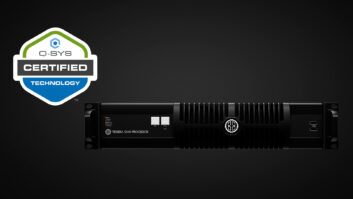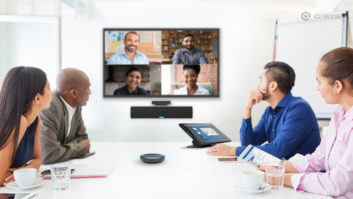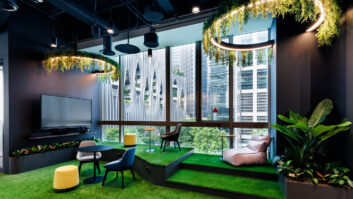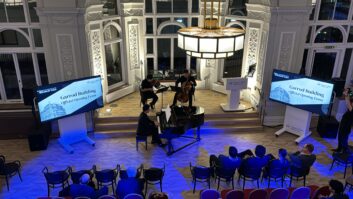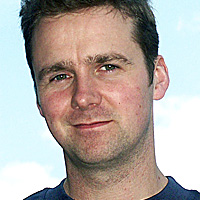
The theatre, broadcast, corporate, education and live event sectors are among those to have benefited from Roland Hemming’s expertise in professional audio technology. Now into the third decade of his career, Hemming oversaw the creation of the world’s largest sound system installation at London’s Millennium Dome in the late 1990s and now heads up his own audio consultancy operation, RH Consulting.
In the last few years, Hemming has become a leading player in the debate surrounding networking and – as this interview will demonstrate – he has some forthright opinions about the (many) hurdles yet to be overcome if a more interconnected vision of AV is to be realised. On 15 September, he will explore some of the most pressing issues when he chairs the Installation Europe/Pro Sound News Europe-produced AVNetworks event at London’s Earls Court Conference Centre. He spoke to David Davies about the event.
AVNetworks will address the current reality and future prospects of AV networking solutions in all their many forms. What do you think delegates will gain from the event?
I think the day is very much aimed at three levels: those who are just learning about networking and are keen to find out more; those who are using networking technology already but want to explore some of the more complex issues; and those who aren’t necessarily interested in the nuts and bolts of the technology, but are keen to find out how it is going to change the economic model of the industry.
I have been involved with the control of audio using computers for 20 years and with networks for 12 years. Nearly every project I do these days involves audio networking technology, so it’s clearly an area that is of very great interest to me, and I look forward to highlighting some of the main issues during this event.
If you had to write a short progress report on audio networking, what would it say?
In many ways, I feel that we are still in the dark ages compared to other industries, and I am concerned that if we don’t get to grips with some of the problems, the IT sector will [take the initiative] and say ‘this is what is going to happen’. In that scenario, it could be that the solutions they select are inadequate from an audio point-of-view, but are beautifully compatible with their IT solutions.
Common standards would be wonderful, but actually the main problem now is that we lack quality software [that can be used with multiple manufacturers’ devices]. We need to get to a point where people [can use this software] to collaborate, adapt, standardise and receive decent support; at the moment, software tends to be seen as the add-on to the product.
In lighting, you can have your programmable desk controlling a bunch of moving lights, and then change those lights to different models, and it all still works. Unfortunately, we have not reached that kind of stage in audio, and there are still so many issues to address: for example, it’s ludicrous that in 2010 you can still have a digital desk with loads of screens but are not able to see what your amplifiers are up to.
While there will be extensive discussion of audio networking technology, AVNetworks will also explore video networking and integration with IT systems.
That’s right – we will address video networking and integration with IT and building systems. So following a manufacturer’s panel discussion in the morning, ASL Safety & Security’s Vince Negri and Stardraw.com’s Dave Snipp will look at the overall outlook for system control and integration, while a session entitled ‘beyond audio – integrating with and leveraging the IT, AV and building services worlds’ will draw on the expertise of Intellimedia’s Matt Richards and Exterity’s Mike Allan. There will also be a far-reaching panel discussion on customer expectations with Academy Music Group’s Ed Jackson, Electrosonic’s Peter Barrett, Church House Conference Centre’s Benjamin Pain and Arup’s Sam Wise.
The issue of customer expectations is crucial and I hope that in this regard the day will serve as a bit of a reality check. The client expects a level of integration that is not even on most of the industry’s radar, which is why we now have a situation where people from outside the sector [are becoming involved with AV networking].
Individual products might be wonderful [and we can acknowledge that], but we need to be prepared to look at the harsh realities. If people take the conference in the manner in which it is intended, it will offer a practical forum in which everyone can be open and discuss what needs to happen next, rather than simply focusing on any immediate product plans.
If AV networking is in ‘the dark ages’ now, where do you think it will be in five years’ time?
I think networking will be a matter of routine in five years, but cross-manufacturer-compliant, plug-and-play, ‘everything’s lovely’ – I don’t think so. My view is that analogue devices will continue to exist for many years, but that it will soon be the same price or cheaper to have a fully digital, networked system. As to whether manufacturers will be on their own or working in little camps, with three or four working together, I wouldn’t like to make any predictions.
Presumably the future is going to involve a lot more cross-manufacturer cooperation, though?
Absolutely – people will have to start collaborating, and it won’t just be in terms of a desk manufacturer working with an amplifier developer, for example. There will also need to be collaboration with fire alarm companies, building management software providers, video server manufacturers and all those aspects that are relevant [to the end-user].
But it’s not just an issue of collaboration – we also require some intelligent strategic thought by industry leaders on how we might agree some standards and how the software we require will be paid for. It’s a long story and we are really just at the beginning.
For the full AVNetworks agenda and registration information, please visit the dedicated website: www.avnetworks2010.com.
For more on Roland Hemming’s current projects and consultancy operation, see www.rhconsulting.eu.


